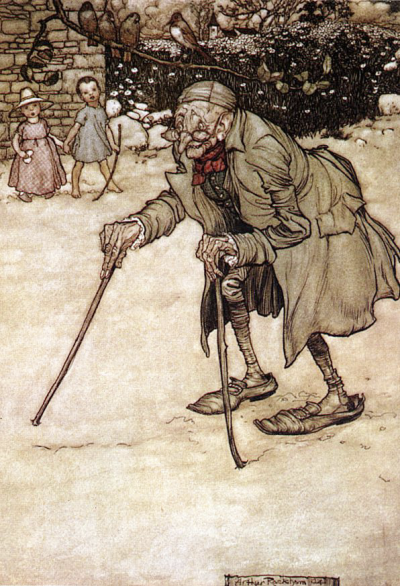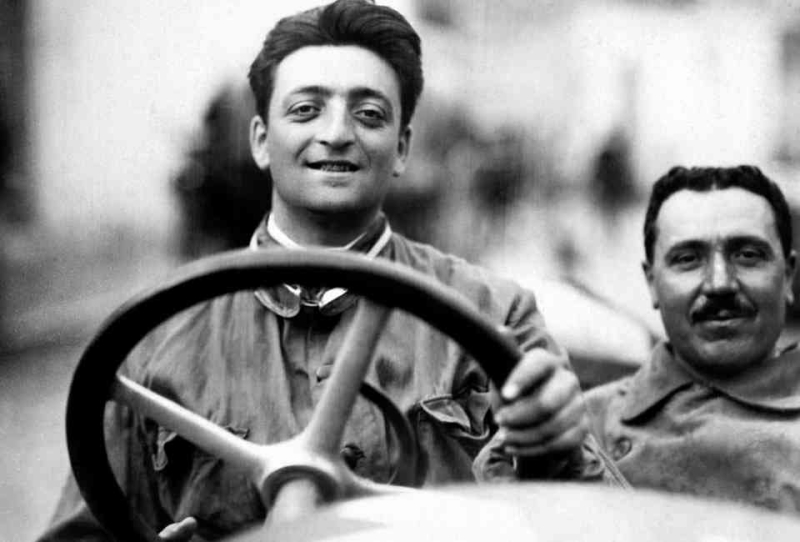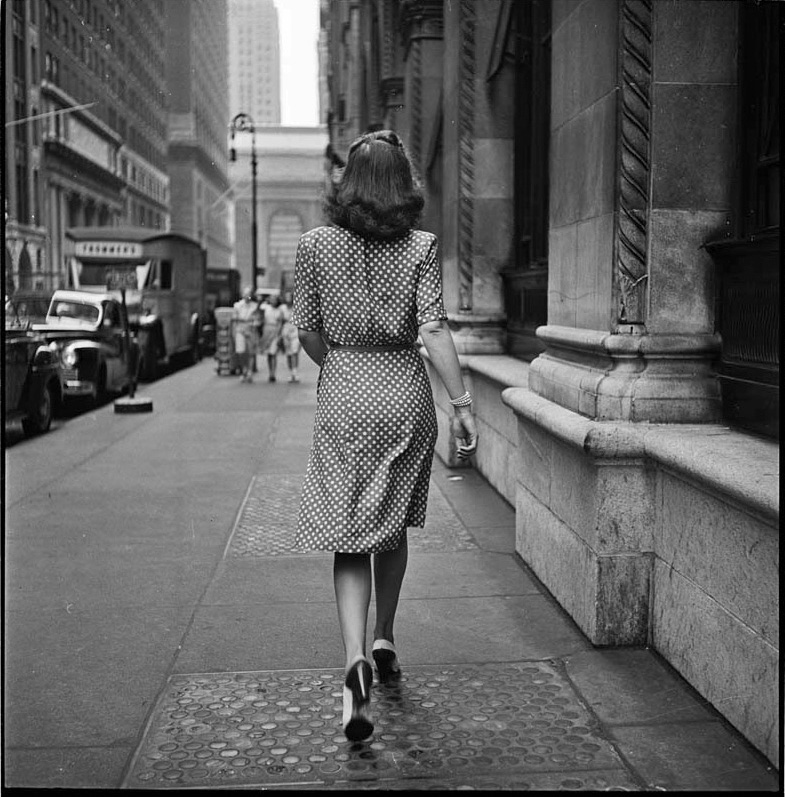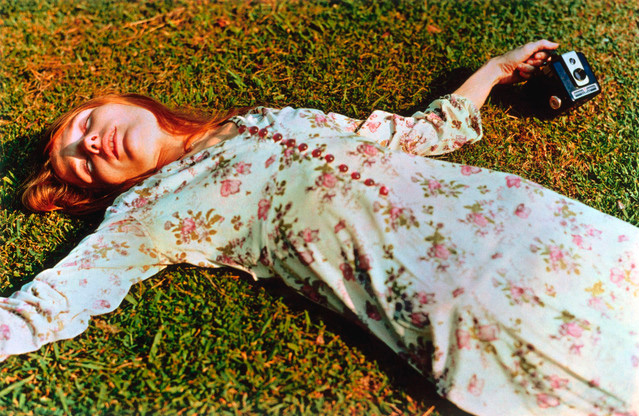 Arthur Rackham illustration from Rip Van Winkle.
Arthur Rackham illustration from Rip Van Winkle.
But how did he know what I look like?
State of the Ed.: Yr. Hmbl. Ed. made a reckless move yesterday—I reached across my body for something on the desk. This strenuous exertion produced a "twinge" from my lower back, and I "threw my back out" as they say—O, dolor! O, woe! Now I can move about only with the aid of my cane, and slowly, and in a fair amount of agony at that.
This hasn't happened for years but it used to happen more often back when I was more active. In the past I could trace these events to some sort of strenuous and unaccustomed exercise one, two, or three days prior to the fateful twinge. This time, nothin'. What did I do? Nothing that I can remember.
Amusingly, the older we get, the more random infirmities mimic age infirmities. Forget a word or a name when you're 20 and no one puts it down to age. Do it when you're 80 and people exchange knowing looks. I once had to walk for two weeks with a cane when my back went out when I was 27, and once when I was 42, and I didn't ascribe it to age then and no one else did either. But now, when I hobble around heavily dependent on a cane and moving as if I am halt and lame in the decepitude of decline, I'm sure I look like a character out of Rip Van Winkle (one of my favorite books, by the way. Accept no less than the Arthur Rackham illustrations, in the 1907 or later Heinemann reprints—the 1905 first editions can be $5,000 and up.) Anyway what I was going to say, if I could stay on topic even for one paragraph, is that there was a very interesting article about exercise for older people in the newspaper the other day.
Whew. I barely made it out of that paragraph alive.
Oddly enough—you will swear this is pure rationalization, I swear it is not—playing pool is very good for my neck and back. When I first got a pool table it banished my chronic nagging neck pain for the first time in twenty years.
For the moment I'm in agony, but if patterns persist I should be better in one to three weeks. O dolor, O woe.
State of the fence: I had a most interesting visit from Ralph Rizzo of Hidden Pet Fence yesterday. He recommends a full perimeter of buried wire, and says it's mainly a matter of training the dogs where the boundary is. As the dog approaches the boundary, it first hears an audible buzzing, then, as it moves closer, feels a "tickle," then a pinching, then a firmer pinching. Most dogs never even have to go beyond the training collar to experience anything like a "shock"—they get the idea.
Their trainers help with the first hour or two of training, and then the owner has about a week of due diligence to do, patrolling the perimeter (marked with a line of small flags) with each dog alone on the leash several times a day, reinforcing with a high-value treat when they are warned by the collar and retreat to the yard. Furthermore, there's no chance of the dog getting "stuck" on the wrong side of the hidden fence, because the collar continues to warn and shock continually anywhere beyond the perimeter—the dog has to retreat to the yard to get it to stop.
It turns out that hurting the dog is not advantageous to training, because it makes them fearful. So the idea is to find the level of discomfort that is unpleasant for the dog without being hurtful. He says that in 14 years in business he's only had to resort to a true "shock collar" twice, with particularly headstrong dogs, and in both cases the dogs did become reliably trained. What's more common than that is for dogs to continue to respect the perimeter even with the system turned off.
Finally, innocent passers-by on the road won't be alarmed by Butters charging up to the hidden fence, because the fenceline in our case would be quite far from the road—35 feet from it on one side of the house and almost 50 feet from it on the other side of the house.
Thankfully, it's considerably less expensive than even short sections of real, physical fence (chain link runs about $15 a foot in my area). I'm planning to have it installed in late May. Updates in June, thereabouts, for those who might be interested.
Mystery man:
You might remember one of several previous Mystery Man posts. So who is the devil-may-care young fellow behind the wheel? Hint: he was more famous later in his life. No fair doing an image search for the answer!
Tonality quiz: I mentioned the other day that "cool with warm accent" is one of about a dozen basic, baseline strategies for making strong pictures. Another is compositional—the centered object. Put an object in the center of the frame on a background "field." This can be an effective strategy in many cases and in many ways. As an example, John Szarkowski wrote about this Carleton Watkins picture in Looking at Photographs (and if you don't have that book yet, either you've not been reading this blog for long or you are particularly headstrong—maybe we should get you a shock collar!)—he called it "as simple as a Japanese flag." (I might be paraphrasing...I do not have a good memory for the exact wording of quotes.) Note that the strategy often works even when the central object is surrounded by complex elements.
So here's an excellent, randomly-encountered picture I ran across the other day when searching for examples of excellent B&W tonality. For a full fifteen life-points, can you guess the photographer? Hint: he was famous for his work in a different medium. Again, no fair searching! At the risk of being obvious, the centered object in this case is the lady's belt.
Hope you have a very nice weekend. I have a date on Sunday that I'm looking forward to—I hope she is not put off when I hobble up leaning on my cane! Check back later for more Featured Comments in the Sony A9 post, and see you on Monday.
Mike
"Open Mike" is the any-thought-that-comes-to-mind editorial page of TOP. It is scheduled to appear on Fridays, and is not guaranteed to be off-topic.
Original contents copyright 2017 by Michael C. Johnston and/or the bylined author. All Rights Reserved. Links in this post may be to our affiliates; sales through affiliate links may benefit this site.
Always well centered
Give Mike a “Like” or Buy yourself something nice
(To see all the comments, click on the "Comments" link below.)
Featured Comments from:
Jim Simmons: "William Eggleston has claimed, perhaps in jest, that one of his primary compositional conceits is the X of the Confederate flag. With that in mind, you can see that in many of his images. The Thing in the centre, and outwardly radiating lines."
Mike replies: I don't think I've ever heard that before but when you said that this is what popped into my mind:
...And sure enough. And if you like this picture you will want to see this version by Eleanor Macnair too! (Third one down.) :-)
Mark Sampson: "The young driver in the photo is Enzo Ferrari."
Tony Roberts: "Enzo the magnificent!"
Owin Thomas: "Easy...Enzo Ferrari."
Bill Mitchell: "Enzo Ferrari."
David Mantripp: "That's Enzo Ferrari, isn't it?"
David Millington: "Mystery Man: Jacques Henri Lartigue. Have a good weekend; good luck with the date!"
Mike replies: CORRECT! It is Lartigue.
...Oh, all right, no it isn't. It's Enzo Ferrari. I guess my mystery man this time was not very mysterious.
J. Williams: "Enzo Ferrari I believe? I actually got to drive one of his cars last week. Most fun I have had in a while."
Tom (partial comment): "A genuinely useful book is Back Pain Remedies for Dummies. Every photographer needs a copy."
Mike replies: Sounds like it's aimed at me.
Tim Augur: "My sympathies. I put my back out three weeks ago pulling on a sock. Yes, a sock. Why? Precisely how? What was I doing that was different? Three days of agony and walking at a 45-degree slant."
Mike replies: Sounds like what I and the guy in the Rackham illustration both have all right.
Stan B.: "I grew up in New York, where we learn to laugh at other's misfortunes from an early age (better you than me!) It's an ingrained response I've struggled against ever since. So, being of like age, when I read of your misfortune—better you than me, heh, heh....
"Then this evening after work, halfway through my traditional two-beer Friday, I leaned over to grab the stool, and next thing I knew—I'm bent over writhing in agony! Damn you, Johnston—you immediately came to mind, and you have yet to leave as I write this in near-spasm...."
Mike replies: Oh, dear. I certainly did not mean to put bad karma out there in the world.
Rob Stone: "The photograph of the woman: Stanley Kubrick for Look magazine."
Tom Bell: "I have no idea why...but I love that [Kubrick] photograph. Not sure why!"





